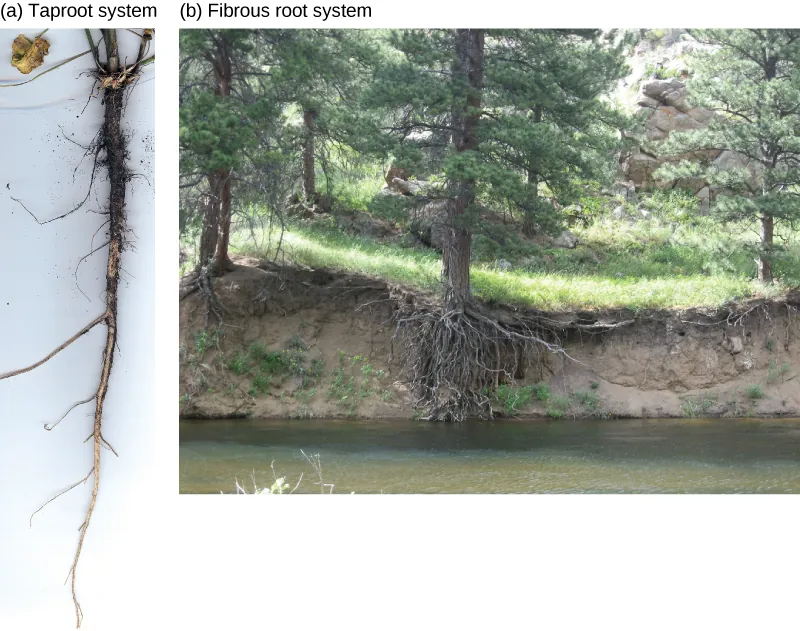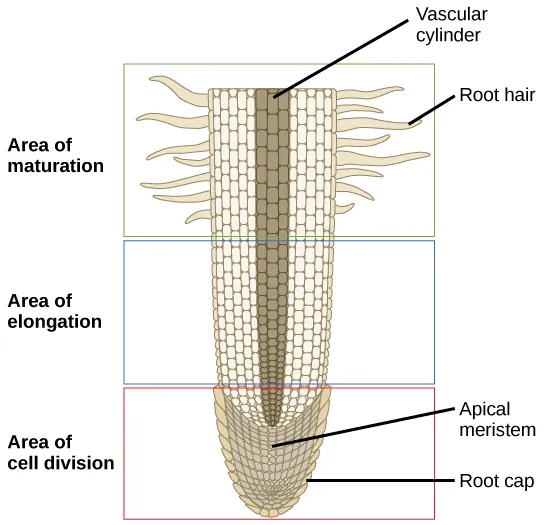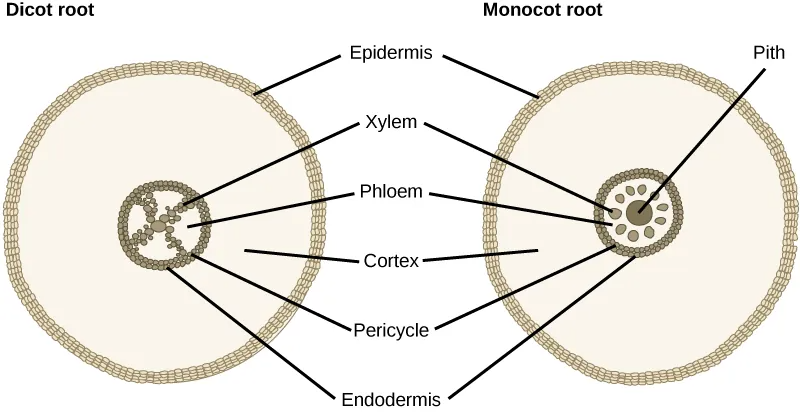30.3 Roots
Learning Outcomes
- Identify the two types of root systems
- Describe the three zones of the root tip and summarize the role of each zone in root growth
- List and describe examples of modified roots
The roots of seed plants have three major functions: anchoring the plant to the soil, absorbing water and minerals and transporting them upwards, and storing the products of photosynthesis. Most roots are underground. Some plants, however, also have adventitious roots, which emerge above the ground from the shoot.
Types of Root Systems
Root systems are mainly of two types (Figure 30.15). Dicots have a tap root system, while monocots have a fibrous root system. A tap root system has a main root that grows down vertically, and from which many smaller lateral roots arise. A tap root system penetrates deep into the soil. In contrast, a fibrous root system is located closer to the soil surface, and forms a dense network of roots that also helps prevent soil erosion (lawn grasses are a good example, as are wheat, rice, and corn).

Root Growth and Anatomy
Root growth begins with seed germination. When the plant embryo emerges from the seed, the radicle of the embryo forms the root system. The tip of the root is protected by the root cap, a structure exclusive to roots and unlike any other plant structure. The root tip can be divided into three zones: a zone of cell division, a zone of elongation, and a zone of maturation and differentiation (Figure 30.16). The zone of cell division is closest to the root tip; it is made up of the actively dividing cells of the root meristem. The zone of elongation is where the newly formed cells increase in length, thereby lengthening the root. Beginning at the first root hair is the zone of cell maturation where the root cells begin to differentiate into special cell types. All three zones are in the first centimeter or so of the root tip.

The root has an outer layer of cells called the epidermis. The epidermis provides protection and helps in absorption. Root hairs, which are extensions of root epidermal cells, increase the surface area of the root, greatly contributing to the absorption of water and minerals.
The vascular tissue in the root is arranged in the inner portion of the root, which is called the stele (Figure 30.18). In dicot roots, the xylem and phloem of the stele are arranged alternately in an X shape, whereas in monocot roots, the vascular tissue is arranged in a ring around the pith.

Root Modifications
Root structures may be modified for specific purposes. For example, some roots are bulbous and store starch. Aerial roots and prop roots are two forms of above ground roots that provide additional support to anchor the plant. Tap roots, such as carrots, turnips, and beets, are examples of roots that are modified for food storage (Figure 30.19).


